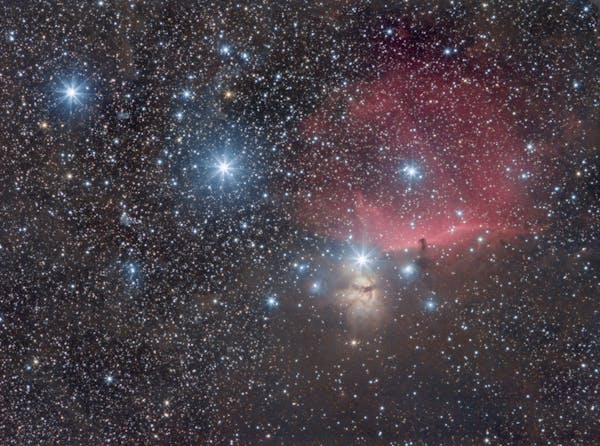The Beauty of Creation by ALLAH ALMIGHTY: Unlock the Reality in 2025
The Beauty of Creation is a testament to the Creator’s magnificence. Here are some relevant verses from the Quran and Hadith that highlight the beauty and perfection of Allah’s creation.
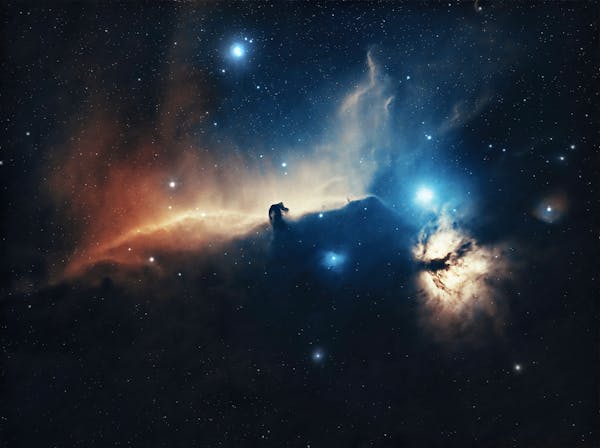
Verses from the Quran
- 1. Surah Al-Baqarah (2:164)
Translation: “Indeed, in the creation of the heavens and the earth, and the alternation of the night and the day, and the [great] ships which sail through the sea with that which benefits people, and what Allah has sent down from the heavens of rain, giving life thereby to the earth after its lifelessness and dispersing therein every [kind of] moving creature, and [His] directing of the winds and the clouds controlled between the heaven and the earth are signs for a people who use reason.”
- Surah An-Nahl (16:18)
Translation: “And if you should count the favours of Allah, you could not enumerate them. Indeed, Allah is Forgiving and Merciful.”
- 3. Surah Al-Mulk (67:3-4)
Translation: “He who created seven heavens in layers. You do not see in the creation of the Most Merciful any inconsistency. So return your vision to the sky, do you see any breaks? Then return your vision twice again. Your vision will return to you humbled while it is fatigued.”
Ahadees
- Sahih Muslim
o Hadith: “Allah is beautiful and loves beauty.” (Sahih Muslim, Book 1, Hadith 147)
- Sahih Bukhari
o Hadith: “The Prophet (peace be upon him) said: ‘Allah has written down the good and bad deeds.’ Then he explained it [by saying that] ‘He who has intended a good deed and has not done it, Allah writes it down with Himself as a full good deed; but if he has intended it and has done it, Allah writes it down with Himself as from ten good deeds to seven hundred times, or many times over.
But if he has intended a bad deed and has not done it, Allah writes it down with Himself as a full good deed, but if he has intended it and has done it, Allah writes it down as one bad deed.’” (Sahih Bukhari, Book 2, Hadith 40)
These references beautifully illustrate the magnificence of Allah’s creation and His boundless mercy and beauty.
The beauty of Allah’s creation is truly awe-inspiring and reflects His infinite wisdom and artistry. Every aspect of the universe, from the vast galaxies to the tiniest particles, showcases remarkable harmony and order.
The Beauty of Creation: Nature and the Cosmos
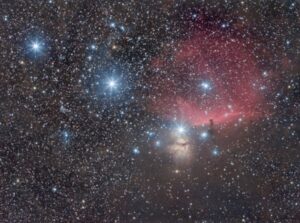
The natural world is a testament to Allah’s creativity. The intricate design of a single leaf, the majestic mountains, the vast oceans, and the diverse ecosystems all highlight the beauty and complexity of creation. The Quran mentions this beauty in several verses, such as:
- “Such is the Creation of Allah: now show Me what is there that others besides Him have created…” (Luqman 31:11)
- “… (Such is) the artistry of Allah, Who disposes of all things in perfect order…” (al-Naml 27:88)
Human Beings
Humans are considered the pinnacle of Allah’s creation, endowed with intellect, emotions, and the ability to reason.
The Quran states:
- “We have indeed created man in the best of moulds” (al-Tin 95:4)
- “It is Allah Who has made for you the earth as a resting place, and the sky as a canopy, and has given you shape – and made your shapes beautiful -, and has provided for you Sustenance…” (Gafir 40:64)
Spiritual Beauty
Beyond the physical, there is also a profound spiritual beauty in creation. The Prophet Muhammad (peace be upon him) said that Allah is beautiful and loves beauty1. This spiritual beauty is reflected in the harmony and balance of the universe, as well as in the moral and ethical teachings that guide human behaviour.
Reflection and Gratitude
Reflecting on the beauty of Allah’s creation can inspire a deep sense of gratitude and humility. It reminds us of our place in the universe and the importance of living in harmony with nature and each other.
The beauty of celestial bodies is truly awe-inspiring and has captivated humanity for centuries. Here are a few highlights:
Nebulas
Nebulas are vast clouds of gas and dust in space, often serving as the birthplace of stars. Their vibrant colours and intricate shapes make them some of the most visually stunning objects in the universe. For example:
-
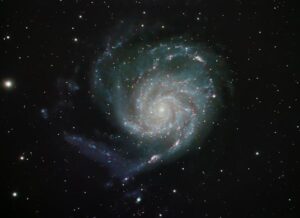
Carina Nebula Carina Nebula: One of the largest star-forming regions visible, home to massive stars like Eta Carinae1.
- Ring Nebula: Known for its simple, graceful shape and colourful gradient from hot blue gas at the centre to cooler green and yellow at the edges1.
- Horsehead Nebula: Recognizable for its horsehead-like shape, this nebula is a favourite among astronomers1.
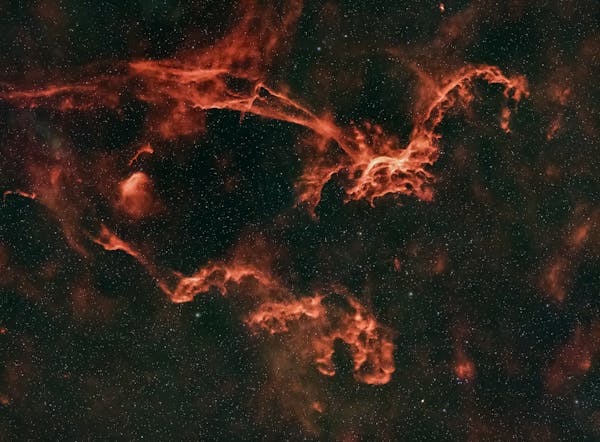
Horsehead Nebula
Galaxies
Galaxies are massive systems of stars, stellar remnants, interstellar gas, dust, and dark matter, bound together by gravity. Each galaxy is unique, in its structure and beauty:
- Milky Way: Our home galaxy, a barred spiral galaxy that appears as a milky band of light in the night sky.
- Andromeda Galaxy: The closest spiral galaxy to the Milky Way, visible to the naked eye from Earth.
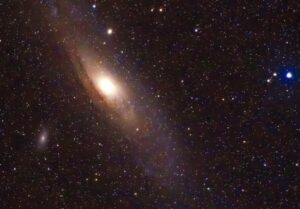
- Sombrero Galaxy: Known for its bright nucleus and large central bulge, giving it the appearance of a sombrero hat.
Planets and Moons
Planets and their moons offer a diverse array of landscapes and phenomena:
- Saturn: Famous for its stunning ring system, composed of ice and rock particles.
- Jupiter’s Moon Europa is believed Andromeda Galaxy to have a subsurface ocean beneath its icy crust, making it a prime candidate for the search for extraterrestrial life.
- Mars: Known as the Red Planet, with its striking red colour due to iron oxide on its surface.
Stars
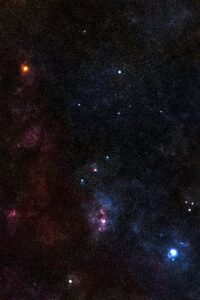
Stars, the building blocks of galaxies, come in various sizes and colours:
- Betelgeuse: A red supergiant star in the constellation Orion, known for its reddish hue and immense size.
- Sirius: The brightest star in the night sky, located in the constellation Canis Major.
Night Sky Photography
Capturing the night sky through photography can reveal the hidden beauty of celestial bodies. Away from city lights, the sky is filled with constellations, far-off planets, and galaxies. This can be a deeply moving experience, reminding us of the vastness and wonder of the universe.
The Milky Way is a fascinating and complex barred spiral galaxy that includes our Solar System. Here are some intriguing details about it:
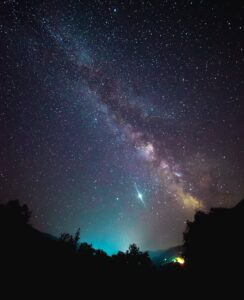
Structure and Size
- Shape: The Milky Way is a barred spiral galaxy, which means it has a central bar-shaped structure composed of stars, around which spiral arms extend.
- Size: It has an estimated diameter of about 100,000 to 200,000 light-years and contains between 100 to 400 billion stars12.
- Thickness: The galaxy is relatively thin, with the disk being about 1,000 light-years thick at the spiral arms1.
Components
- Galactic Center: At the centre of the Milky Way lies a supermassive black hole known as Sagittarius A*, which has a mass of about 4 million times that of the Sun1.
- Spiral Arms: The Milky Way has several spiral arms, including the Orion Arm, where our Solar System is located1.
- Halo: Surrounding the galaxy is a halo of old stars and globular clusters, which are spherical collections of stars2.
Interesting Facts
- Age: The oldest stars in the Milky Way are nearly as old as the Universe itself, suggesting they formed shortly after the Big Bang1.
- Dark Matter: The Milky Way, like other galaxies, contains a significant amount of dark matter, which is invisible but exerts gravitational forces1.
- Satellite Galaxies: The Milky Way has several smaller satellite galaxies, including the Large and Small Magellanic Clouds1.
Observing the Milky Way
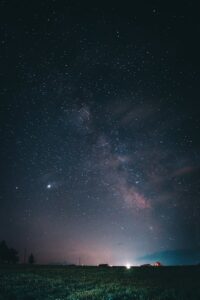
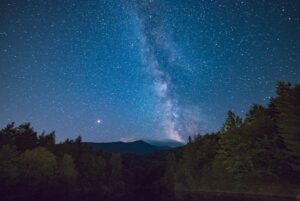
- Appearance: From Earth, the Milky Way appears as a hazy band of light stretching across the night sky, which is the combined light of billions of distant stars1.
- Visibility: It’s best observed from dark, rural areas away from city lights. The best time to see it is during the summer months in the Northern Hemisphere.
The Milky Way is not just our home but also a window into the vast and mysterious universe. 1: Wikipedia 2: Britannica
The Quran beautifully describes the wonders of the universe and the blessings bestowed upon us. Here are some additional references:
- Surah Al-Rahman (55:13): “Then which of your Lord’s favours will you both deny?” This verse is repeated throughout Surah Al-Rahman, emphasizing the countless blessings of Allah.
- 2. Surah Al-Nahl (16:18): “And if you should count the favours of Allah, you could not enumerate them. Indeed, Allah is Forgiving and Merciful.”
- Surah Al-Mulk (67:3-4): “He who created seven heavens in layers. You do not see in the creation of the Most Merciful any inconsistency. So return your vision to the sky, do you see any breaks? Then return your vision twice again. Your vision will return to you humbled while it is fatigued.”
- Allah Almighty says – for instance: “He Who created the seven heavens one above another: no want of proportion wilt thou see in the Creation of the Most Gracious. So turn thy vision again: seest thou any flaw? Again turn thy vision a second time: (thy) vision will come back to thee dull and discomfited, in a state worn out” (al-Mulk 67:3 – 4).
- Surah Al-An’am (6:99): “And it is He who sends down rain from the sky, and We produce thereby the growth of all things. We produce from it greenery from which We produce grains arranged in layers. And from the palm trees – of its emerging fruit are clusters hanging low. And gardens of grapevines, olives, and pomegranates, similar yet varied. Look at [each of] its fruit when it yields and [at] its ripening. Indeed in that are signs for a people who believe.”
- Surah Al-Naba (78:6-7): “Have We not made the earth a resting place? And the mountains as stakes?”
- Surah Al-Ghashiyah (88:17-20): “Then do they not look at the camels – how they are created? And at the sky – how it is raised? And at the mountains – how they are erected? And at the earth – how it is spread out?”
These verses highlight the beauty and intricacy of Allah’s creation, encouraging us to reflect on the natural world and recognize the signs of His greatness12345.
Deepening your understanding of specific verses can be a rewarding journey. Here are some steps you can take:
- Contextual Study: Understand the historical, cultural, and literary context in which the verses were written. This can provide insight into their original meaning and significance.
- Commentaries and Explanation: Read scholarly commentaries and exegesis. These works often provide detailed explanations and interpretations from various perspectives.
- Language and Translation: If the verses are in a language you’re not fluent in, consider studying the original language or comparing multiple translations. This can reveal nuances that might be lost in a single translation.
- Cross-Referencing: Look for other verses or texts that relate to the ones you’re studying. This can help you see broader themes and connections.
- Discussion Groups: Join study groups or online forums where you can discuss the verses with others. Different viewpoints can enrich your understanding.
- Meditation and Reflection: Spend time reflecting on the verses. Consider what they mean to you personally and how they apply to your life.
- Practical Application: Try to apply the teachings of the verses in your daily life. This can provide a deeper, experiential understanding.
Here are some interesting references and insights about human beauty:
- Golden Ratio and Facial Beauty: Stephen R. Marquardt’s research on facial beauty uses the Golden Ratio (phi) to define beauty across different cultures and eras. His Marquardt Beauty Mask, based on geometric shapes like the pentagon and decagon, illustrates how certain proportions are universally perceived as beautiful1.
- Dualist Theory of Beauty: According to the University of Lucerne, human beauty encompasses both outer physical appearance and inner character. Inner beauty is often associated with moral or virtuous traits, suggesting that true beauty is a combination of both physical and inner qualities2.
- Scientific Perspectives on Beauty: Research indicates that beauty preferences may stem from a basic cognitive process that develops early in life. Certain physical features are universally recognized as attractive, suggesting an innate ability to categorize beauty3.
- Aesthetic Balance: Beauty is often described as a balance between shape, volume, and proportion. It stimulates an aesthetic feeling, pleasing to the eye and evoking admiration4.
These references provide a comprehensive view of how human beauty is perceived and analyzed from different perspectives
The Quran contains several verses that highlight the beauty and perfection in the creation of humans. Here are a few notable ones:
- 1. Surah At-Teen (95:4):
“We have certainly created man in the best of stature.”
- Surah As-Sajdah (32:7):
“He who perfected everything which He created and began the creation of man from clay.”
- 3. Surah Al-Infitar (82:6-8):
“O mankind, what has deceived you concerning your Lord, the Generous, Who created you, proportioned you, and balanced you? In whatever form He willed has He assembled you.”
These verses emphasize the meticulous and beautiful creation of humans by Allah. They reflect the divine artistry and wisdom in human creation12.
Ahadees (sayings of Prophet Muhammad ﷺ) that you might find inspiring:
- On Kindness and Compassion:
o “The best among you are those who have the best manners and character.” (Sahih Bukhari)
o “Allah is kind and loves kindness in all matters.” (Sahih Muslim)
- On Seeking Knowledge:
o “Seeking knowledge is an obligation upon every Muslim.” (Sunan Ibn Majah)
o “He who follows a path in quest of knowledge, Allah will make the path of Jannah easy for him.” (Sahih Muslim)
- On Charity and Helping Others:
o “The best charity is that given in Ramadan.” (Tirmidhi)
o “He who relieves a hardship of this world for a believer, Allah will relieve a hardship of the Day of Resurrection for him.” (Sahih Muslim)
- On Gratitude and Contentment:
o “He who does not thank people, does not thank Allah.” (Ahmad, Tirmidhi)
o “Richness is not having many possessions, but richness is being content with oneself.” (Sahih Bukhari)
These Ahadees emphasize the importance of good character, the pursuit of knowledge, charity, and gratitude.
Human beauty encompasses a wide range of virtues beyond just physical appearance. Here are some qualities that contribute to true human beauty:
- Kindness: Acts of compassion and empathy towards others.
- Integrity: Being honest and having strong moral principles.
- Humility: Recognizing one’s limitations and valuing others.
- Resilience: The ability to recover from setbacks and keep going.
- Generosity: Willingness to give time, resources, and support to others.
- Wisdom: The ability to make sound decisions based on knowledge and experience.
- Patience: The capacity to accept or tolerate delay, trouble, or suffering without getting angry or upset.
- Gratitude: Appreciating what one has and expressing thanks.
- Courage: Facing fears and challenges with bravery.
- Empathy: Understanding and sharing the feelings of others.
- Optimism: Maintaining a positive outlook on life.
- Respect: Valuing others and treating them with dignity.
- Creativity: The ability to think outside the box and come up with innovative ideas.
- Loyalty: Being faithful and supportive to friends, family, and causes.
- Forgiveness: Letting go of grudges and resentment.
These virtues not only enhance one’s inner beauty but also positively impact the lives of those around them.
The Quran beautifully describes various creations of Allah, highlighting their beauty and significance. Here are some examples:
- Birds and Animals:
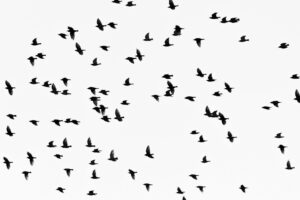
Birds Flying
o Birds: “Do they not see the birds controlled in the atmosphere of the sky? None holds them up except Allah. Indeed in that are signs for people who believe.” (Surah An-Nahl, 16:79)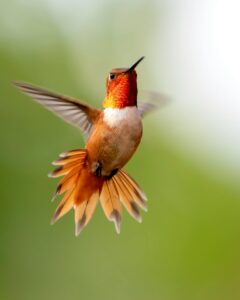
o Animals: “And there is no creature on [or within] the earth or bird that flies with its wings except [that they are] communities like you.” (Surah Al-An’am, 6:38)
- Trees and Plants:
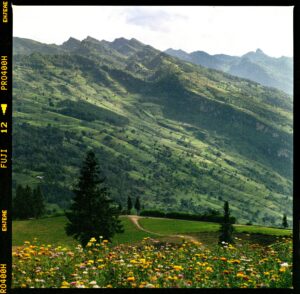
Trees and Plants
o “And We send down from the sky rain chartered with blessing, and We produce therewith gardens and grain for harvests; and tall (and stately) palm trees, with shoots of fruit-stalks, piled one over another.” (Surah Qaf, 50:9-10)
- Oceans and Marine Life:

Oceans and Marine Life 
Oceans and Marine Life
o “And it is He who has subjected the sea for you to eat from it tender meat and to extract from it ornaments which you wear. And you see the ships ploughing through it, and He subjected it that you may seek of His bounty, and perhaps you will be grateful.” (Surah An-Nahl, 16:14)
- Mountains and Landscapes:
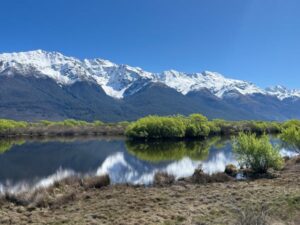
Mountains and Landscapes
o “And the earth – We spread it out and cast therein firmly set mountains and made grow therein [something] of every beautiful kind.” (Surah Qaf, 50:7)
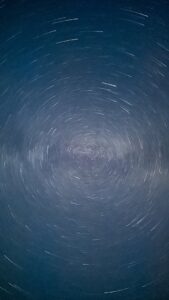 Heavens and Celestial Bodies:
Heavens and Celestial Bodies:

Heavens and Celestial Bodies
o “Indeed, in the creation of the heavens and the earth and the alternation of the night and the day are signs for those of understanding.” (Surah Al-Imran, 3:190)
These verses not only emphasize the beauty of Allah’s creations but also encourage reflection on the signs of His greatness and mercy123.
Source:
1: Live Science 2: Smithsonian Magazine
If you enjoyed this article, please like and share it with your friends, and don’t forget to subscribe for more great content!
Winter 24/25: The Epic Wisdom Behind Different Weathers All Year Long
Human Creation: Fascinating Quranic Facts Revealed Over 1400 Years Ago
